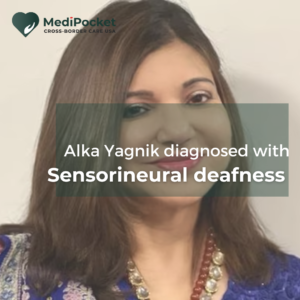Paediatric conditions are a broad category of illnesses that affect newborns and children. Some of these occur seldom, while others arise immediately after birth. When we hear of diseases or problems affecting children, we immediately think of colds, flu, fevers, rashes, and so on. We are not entirely wrong, but there are other significant paediatric disorders that affect the body’s regular functioning.
As previously stated, some disorders develop over time, while others develop at birth. In any case, certain illnesses have a long-term impact on the kid, but others can be recognized and treated at an early stage. Early detection is essential in all situations since it can enhance outcomes and quality of life.
Paediatricians are doctors who specialise in treating infants and children. They collaborate with children and families to manage illnesses and promote optimal health. Children with paediatric diseases may require specific care and treatment, and a holistic strategy that covers their physical, emotional, and social needs is essential.
It is vital for parents to check for any indications and symptoms of a probable disease in their child before it is too late. Certain illnesses can be treated at an early stage, but others can take a lifetime to diagnose and treat.
Table of Contents
ToggleTypes of paediatric conditions
Some of the paediatric conditions that affect children are as follows.
Celiac disease
Celiac disease, a common type of paediatric disease, is an autoimmune illness that affects the digestive system, particularly the small intestine. It is caused by eating gluten, a protein present in wheat, barley, and rye. When someone with celiac disease consumes gluten, their immune system assaults the small intestine lining, causing inflammation and damage. This damage can result in a variety of symptoms such as abdominal pain, diarrhoea, weight loss, and exhaustion.
It is one of the most common chronic disorders in childhood, affecting around one in every hundred children worldwide. Celiac disease can cause a variety of symptoms in children, including failure to thrive, delayed puberty, and dental enamel abnormalities.
seizures/epilepsy
Seizures, also known as epilepsy, are a neurological illness that alters the electrical activity of the brain, resulting in uncontrollable movements and/or changes in behaviour or awareness. People of various ages, including children, can be affected. Epilepsy is, in fact, one of the most frequent neurological diseases in children.
Children’s epilepsy can be caused by a range of reasons such as brain injury, infections, hereditary diseases, or developmental abnormalities. Seizures vary in frequency and severity, and while some children outgrow their epilepsy, others may require continuous therapy.
This type of paediatric condition can interfere with a child’s ability to attend school, participate in sports, or engage in social activities. It can also cause emotional and behavioural problems for both the child and his or her family.
Measles
Measles, another type of paediatric condition, is a highly contagious viral infection that is most common in youngsters. Coughing or sneezing, or direct contact with an infected person’s nasal or throat secretions, spreads the virus through the air. High fever, cough, runny nose, red eyes, and a distinctive rash that begins on the face and extends to the rest of the body are common symptoms that develop 10-14 days after exposure. Measles can result in serious complications, such as pneumonia, brain damage, and even death, especially in young infants and individuals with compromised immune systems.
Dyspraxia
Dyspraxia, also known as Developmental Coordination Disorder (DCD), is a neurological illness that affects a child’s ability to perform physical motions and tasks. Fine motor abilities such as tying shoelaces, buttoning garments, or writing may be challenging for children with DCD, as may gross motor skills such as sprinting, jumping, or catching a ball.
DCD is a prevalent disorder that affects about 5-6% of school-aged children. It affects boys more than girls and can co-occur with other disorders such as attention deficit hyperactivity disorder (ADHD) or learning difficulties. The exact cause of DCD is not yet known, but it is thought to be related to a problem in the way the brain processes information needed for movement.
Eczema
Eczema, also known as atopic dermatitis, is a persistent skin disorder characterised by dry, itchy, and irritated skin. People of various ages, including children, can be affected. The said paediatric disease is quite common in children, with around one in every five children suffering from it at some point in their life.
Children with eczema frequently have red, itchy skin patches that might be rough or scaly. These patches can occur anywhere on the body, but the face, neck, and limbs are the most usually affected. Eczema can also cause skin to thicken and leathery over time, leading to skin infections if not treated. While the specific aetiology of eczema is unknown, a combination of genetic and environmental factors is thought to be involved.
Pneumonia
Another type of paediatric condition is Pneumonia, an infection of the lungs caused by bacteria, viruses, or fungi. It can affect people of all ages, but it is especially harmful for children under the age of five and those with compromised immune systems. Cough, fever, fast breathing, chest pain, and exhaustion are all signs of pneumonia in children.
Children are especially vulnerable to pneumonia because their immune systems are still developing and may not be able to fight off the infection as successfully as adults. In severe situations, pneumonia can lead to respiratory failure, sepsis, and even death. If your kid has pneumonia symptoms, it is critical that you get medical assistance very once.
Bronchitis
Bronchitis is a respiratory illness marked by inflammation of the bronchial tubes, which transport air to and from the lungs. When these tubes become inflamed, they produce an excessive amount of mucus, resulting in coughing, trouble breathing, and other symptoms.
Because of their weakened immune systems and frequent exposure to viruses and germs, children are more likely to acquire bronchitis. Coughing, wheezing, difficulty breathing, chest tightness, and weariness are all signs of bronchitis in children.
Bronchitis is classified into two types: acute and chronic. Acute bronchitis is a short-term illness caused by a viral or bacterial infection that usually clears itself within a few weeks if treated properly. Chronic bronchitis, on the other hand, is a long-term illness that is usually caused by smoking or exposure to secondhand smoke.
The conditions described above were only a handful of them. There are also others that, if not handled early, can drastically destroy a child’s life. Every parent is required to monitor their child from an early age, and paediatricians are required to obtain vital tests and procedures to guarantee that every child born is healthy and fit.
If you are concerned about your child’s health and want to speak with the greatest child specialist available, join the MediPocket world and be linked with one. We will ensure that your child receives the care and treatment that he or she requires from the world’s top leading hospitals in the United States.












